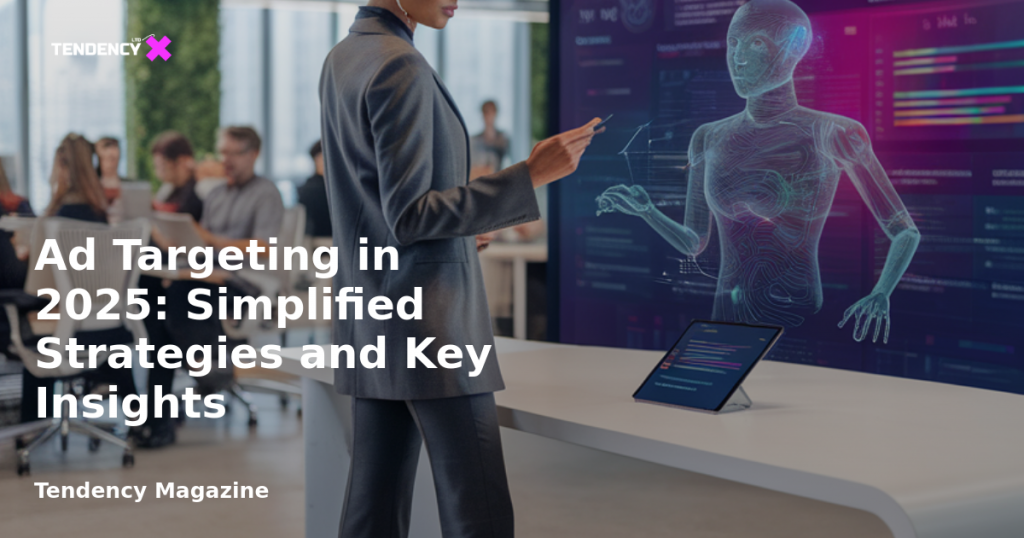Ad Targeting in 2025: Simplified Strategies and Key Insights

Introduction
In the ever-evolving landscape of digital advertising, 2025 presents a new horizon for ad targeting strategies. As we step into this future, it’s crucial to recognize that the methods that once drove successful campaigns have shifted dramatically. The era of rigid targeting parameters has given way to a more fluid, algorithm-driven approach. This article serves as a comprehensive guide to navigating ad targeting in 2025 and beyond, offering insights into simplified strategies that prioritize broader reach and fewer restrictions.
Table of Contents
- Introduction
- Detailed Targeting
- Lookalike Audiences
- Age and Gender Considerations
- The Evolving Role of Remarketing
- Ad Set Segmentation vs. Consolidation
- Simplifying Targeting Strategies
- Conclusion
Detailed Targeting
Gone are the days when advertisers could rely solely on detailed targeting to reach their desired audience. The digital advertising landscape has undergone a significant transformation, driven by advancements in algorithms and data analytics. In 2025, the focus is on simplifying targeting strategies to maximize efficiency and effectiveness. This article delves into the key aspects of ad targeting, exploring how detailed targeting, lookalike audiences, age and gender considerations, and remarketing have evolved over time.
Lookalike Audiences
Detailed targeting, often associated with interests and behaviors, has seen a shift in its significance. Previously, advertisers meticulously selected targeting inputs, believing they held the key to reaching the right audience. However, the landscape has changed. When optimizing for conversions, landing page views, or link clicks, detailed targeting inputs are now treated as mere suggestions. The algorithm takes precedence, expanding the reach beyond specified groups to enhance performance. This shift underscores the importance of leveraging algorithmic targeting while recognizing that detailed inputs may no longer hold the same weight.
Age and Gender Considerations
Introduced in 2013, lookalike audiences were a game-changer in expanding reach. By providing a source audience, advertisers could tap into a broader pool of potential customers. However, in 2025, the role of lookalike audiences is evolving. When optimizing for conversions, these audiences are treated as suggestions, with the algorithm dictating the reach. This shift prompts advertisers to question the necessity of lookalike audiences, as algorithmic targeting inherently fulfills a similar purpose. While lookalike audiences remain relevant, their impact is contingent on the performance goal, urging advertisers to prioritize algorithmic targeting.
The Evolving Role of Remarketing
The control over age and gender selections has become more flexible, thanks to advancements in Advantage+ Audience. While advertisers can set minimum age limits and use age ranges and gender as suggestions, the decision to restrict targeting by these parameters depends on the optimization goal. For purchases, allowing the algorithm to identify potential buyers without age or gender restrictions can enhance efficiency. However, when optimizing for leads or other objectives, greater targeting control may be necessary to ensure quality results.
Ad Set Segmentation vs. Consolidation
Remarketing, once a cornerstone of digital advertising, has experienced a transformation. While it remains effective, the automatic integration of remarketing within algorithmic targeting has diminished its standalone role. The focus has shifted to achieving incrementality and avoiding overlap with existing customer bases. While some advertisers advocate for excluding remarketing audiences altogether, its relevance persists in specific scenarios. However, the emphasis is on using remarketing as an exception rather than the rule, allocating a smaller budget to this strategy.
Simplifying Targeting Strategies
The trend towards simplified targeting extends to ad set segmentation and consolidation. In the past, advertisers meticulously segmented ad sets based on targeting strategies, leading to budget dilution and audience fragmentation. In 2025, the focus is on consolidating ad sets to maximize data and conversions. By reducing the number of ad sets, advertisers can exit the learning phase more efficiently and achieve optimal results. This streamlined approach aligns with the broader trend of simplifying targeting strategies.
Conclusion
The overarching theme of ad targeting in 2025 is simplification. Many of the rules and practices that governed targeting in the past have become obsolete. Algorithmic targeting, particularly when optimizing for conversions, has become unavoidable. Advertisers are encouraged to limit unnecessary customizations and embrace a simplified approach that prioritizes broad reach and algorithm-driven decision-making. While exceptions exist, the starting point should always be simplicity, with restrictions added only when specific problems arise.
As we navigate the complexities of ad targeting in 2025, the emphasis is on embracing change and adapting to new paradigms. The evolution of detailed targeting, lookalike audiences, age and gender considerations, and remarketing reflects the broader shift towards algorithmic targeting. By simplifying strategies and consolidating ad sets, advertisers can harness the power of algorithms to achieve optimal results. As we move forward, the key lies in understanding the capabilities of modern algorithms and leveraging them to drive success in the digital advertising landscape.
2025 Tendency LTD. All rights reserved.

